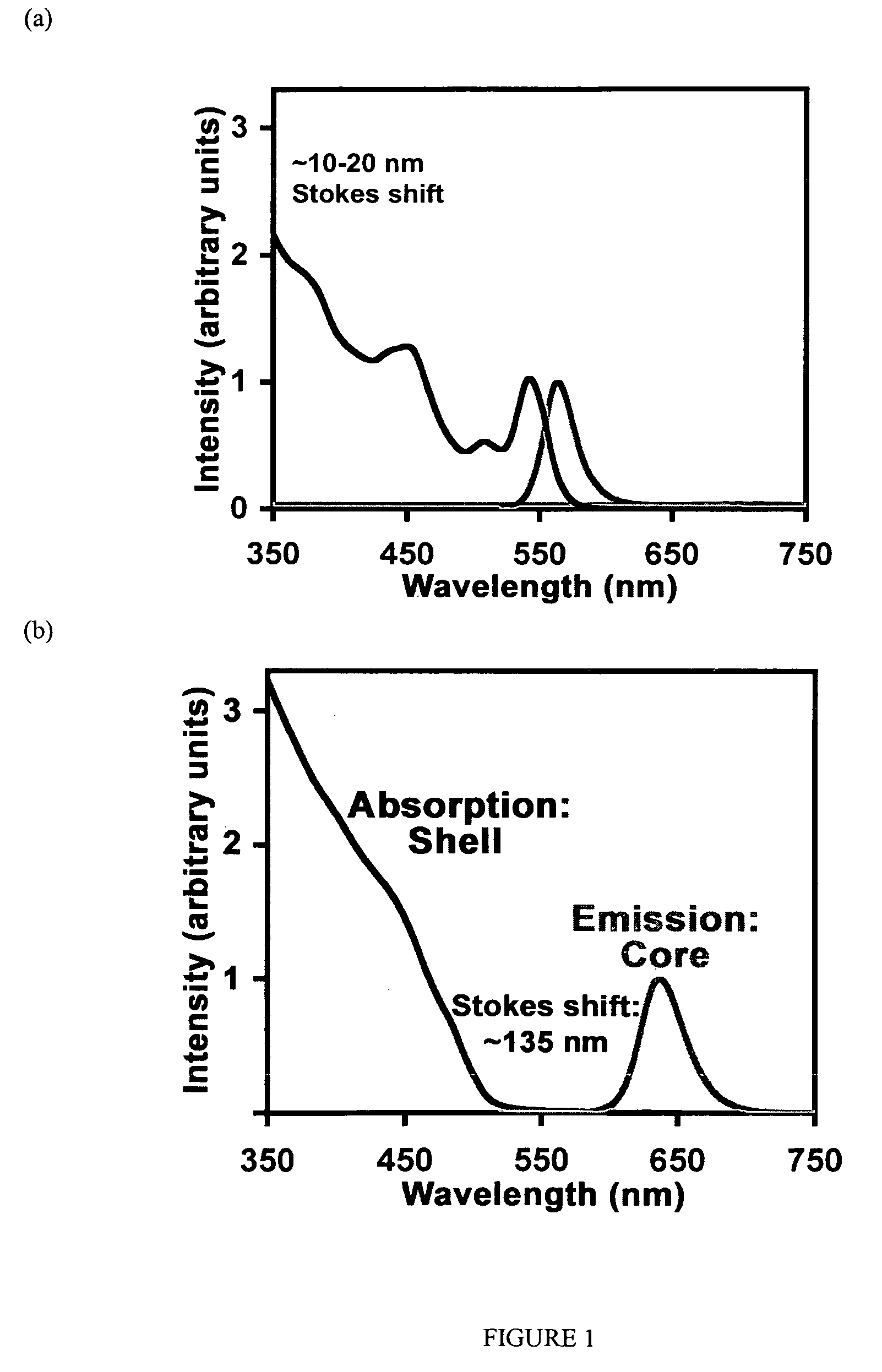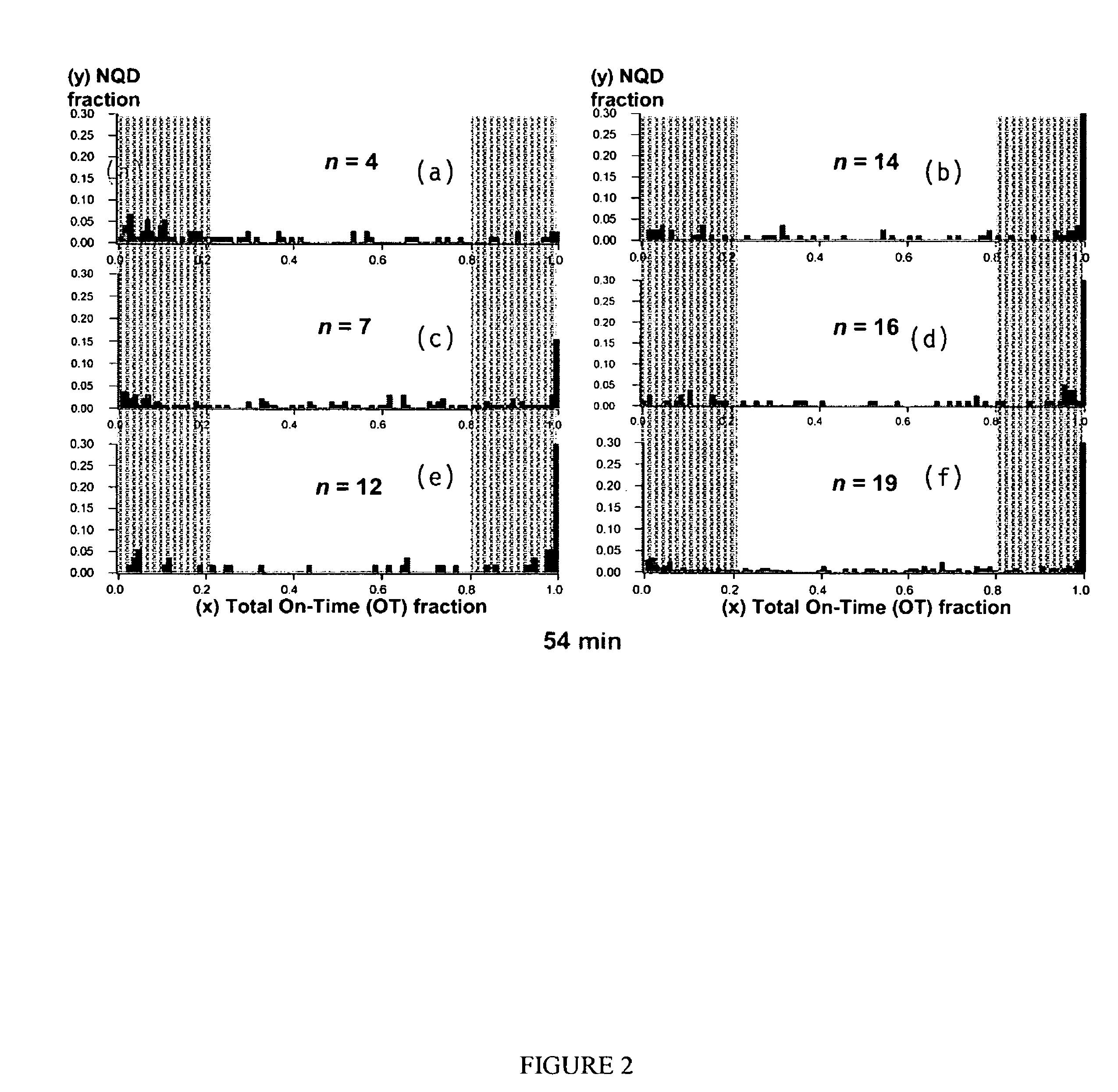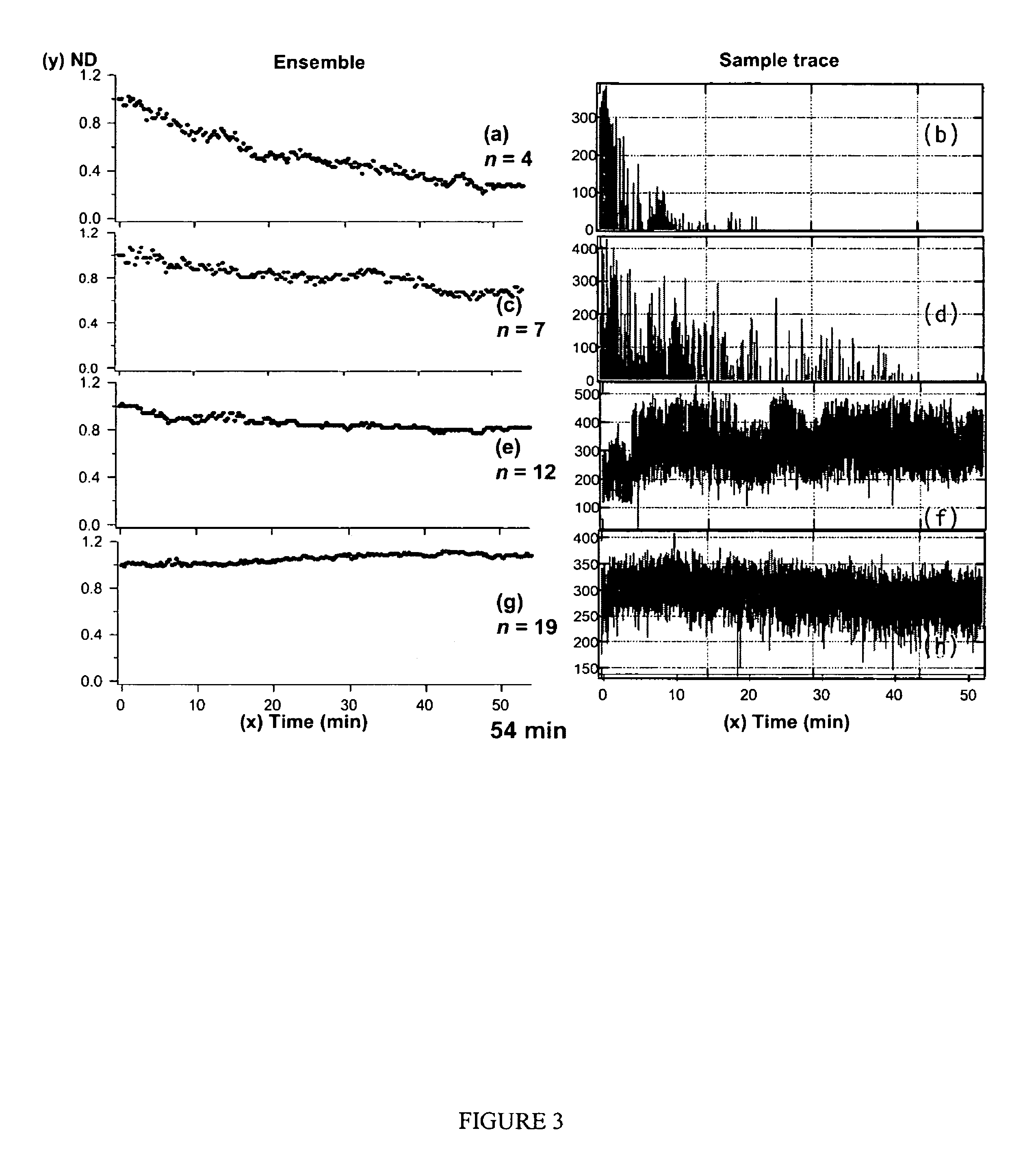Thick-shell nanocrystal quantum dots
a nanocrystal and thick shell technology, applied in the field of thick shell nanocrystal quantum dots, can solve the problems of limiting the use of a particular nqd, uncontrolled changes in qys, and frustratingly sensitive nqd optical properties to their surface chemistry and chemical environment, and achieve the effects of reducing the number of monolayers, and reducing the number of layers
- Summary
- Abstract
- Description
- Claims
- Application Information
AI Technical Summary
Benefits of technology
Problems solved by technology
Method used
Image
Examples
example 1
[0041]Synthesis of CdSe-based “NQDs.” The synthesis of giant CdSe / thick-shell NQDs was based on a SILAR approach with minor modification, as described in Xie et al., “Synthesis and Characterization of Highly Luminescent CdSe-Core CdS / Zn0.5Cd0.5S / ZnS Multishell Nanocrystals,” J. Am. Chem. Soc. (2005), v. 127, pp. 7480-7488. The CdSe core was prepared by injection of 1 ml 1.5 M Se-TOP solution into a hot solution containing 1.5 g octadecylamine, 0.5 g TOPO, 5 g octadecene, and 0.2 mmol Cd-oleate under standard air-free conditions. After injection of Se-TOP at 290° C., the temperature was set at 250° C. for CdSe NQD growth. After ten minutes, the solution was cooled down to room temperature, and CdSe NQDs were collected by precipitation with acetone and centrifugation. CdSe core NQDs were re-dispersed in hexane.
[0042]About 1.5×10−7 mol CdSe core NQDs in hexane were put into a 100 ml flask with 3 g ODE and 3 g dioctylamine. Instead of the primary amine used in the literature procedures,...
example 2
Washing Experiment
[0043]To check the stability of NQDs with regard to purification, the NQDs of Example 1 were precipitated from growth solution and dispersed in hexane as described above. Further, they were subsequently subjected to multiple “purification” steps in which they were substantially completely precipitated with methanol followed by re-dispersion in hexane. This process was repeated up to seven times and without loss of solubility. QYs in emission were measured in growth solution, as well as after each precipitation / re-dispersion cycle. As controls, CdSe core NQDs and standard CdSe core / shell and core / multi-shell NQDs were similarly prepared, purified and measured for QY.
example 3
Water-Soluble NQDs
[0044]CdSe NQDs were transferred into water by stirring purified nanocrystals (˜5×10−9 mol) in hexane with 1 mmol mercaptosuccinic acid in 5 ml deionized water overnight. Mercaptosuccinic acid was neutralized by tetramethylammonium hydroxide in water. The pH of the water was about 7.0. Mercaptosuccinic acid-capped NQDs were collected by centrifugation, and were then re-dispersed in a small amount of water and precipitated again using an excess of methanol to remove excess mercaptosuccinic acid. Finally, the purified mercatosuccinic acid-capped NQDs were dispersed in deionized water to form optically clear solutions.
PUM
| Property | Measurement | Unit |
|---|---|---|
| average diameter | aaaaa | aaaaa |
| time | aaaaa | aaaaa |
| on-time fraction | aaaaa | aaaaa |
Abstract
Description
Claims
Application Information
 Login to View More
Login to View More - R&D
- Intellectual Property
- Life Sciences
- Materials
- Tech Scout
- Unparalleled Data Quality
- Higher Quality Content
- 60% Fewer Hallucinations
Browse by: Latest US Patents, China's latest patents, Technical Efficacy Thesaurus, Application Domain, Technology Topic, Popular Technical Reports.
© 2025 PatSnap. All rights reserved.Legal|Privacy policy|Modern Slavery Act Transparency Statement|Sitemap|About US| Contact US: help@patsnap.com



